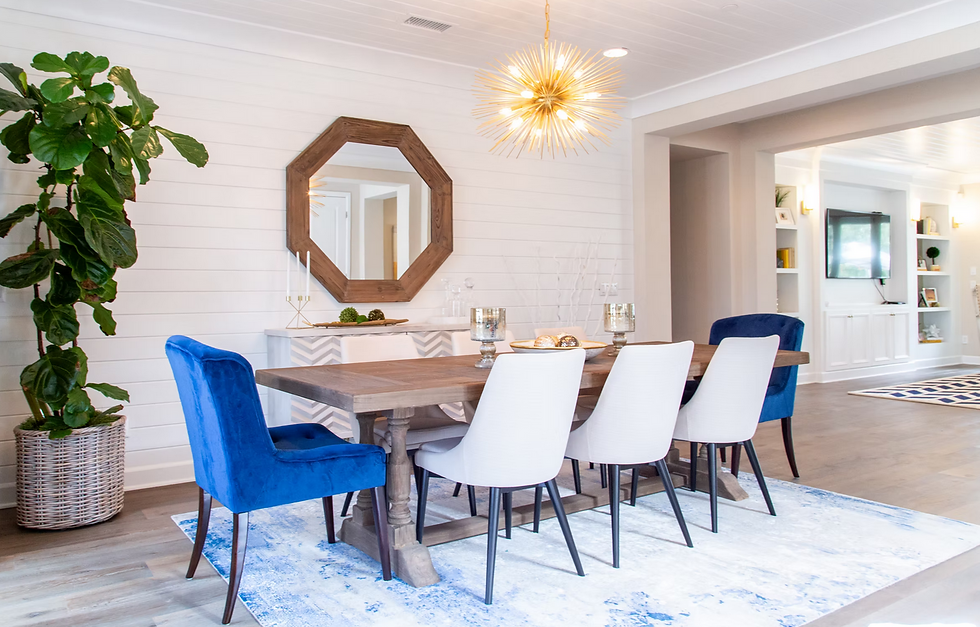Texture Mixology: How to Incorporate Different Textures into Your Home's Design
- Vision Interiors
- May 9, 2023
- 2 min read

When it comes to interior design, texture is just as important as color, pattern, and shape. By incorporating different textures into your home's design, you can add depth, dimension, and visual interest to any space. Here are some tips and ideas to help you mix and match textures like a pro.
Start with a neutral palette: A neutral color palette can create a clean canvas to showcase different textures. Shades of white, beige, gray, or black can be a great backdrop to incorporate different textures. You can add some metallic accents or touches of color to provide contrast.
Mix natural and synthetic textures: Blending natural and synthetic textures can create a unique visual experience. For instance, pairing a leather sofa with a silk pillow or a wool rug can add interest and dimension to a living room. Combining textures such as rattan, linen, and jute in your furniture and accessories can give your space a bohemian vibe.
Layer textures: Layering textures is an excellent way to create depth and interest in a room. For example, you can use a faux fur throw on top of a woven blanket on your bed or layer a sheepskin rug on a patterned carpet in your living room. Layering textures also adds warmth and coziness to any space.
Play with contrast: Contrasting textures can add an element of surprise and excitement to a room. For instance, pairing a sleek metal coffee table with a shaggy rug or a smooth leather chair with a chunky knit throw can create a balanced contrast in your space.
Consider the lighting: Lighting can affect the way we perceive different textures. Playing with lighting in a room can highlight and bring out the best in various textures. You can use warm or cool-toned bulbs to accentuate different textures and create different moods.
Mix patterns and textures: Mixing patterns and textures can be a bit tricky, but if done well, it can create a beautiful and unique design. You can use different patterns and textures in your accessories, such as pillows, curtains, and throws, to create a layered and cohesive look.
Don't be afraid to experiment: The beauty of design is that there are no hard and fast rules. Mixing textures is an opportunity to experiment with different materials and ideas. You can try different textures in a small area or start with one element, such as a textured accent wall, and see how it feels.
Summary
In conclusion, mixing textures can add depth, interest, and personality to your home's design. By blending natural and synthetic textures, layering, playing with contrast, considering lighting, mixing patterns and textures, and experimenting, you can create a unique and beautiful space that reflects your personality and style. Happy texture mixing!




Comments